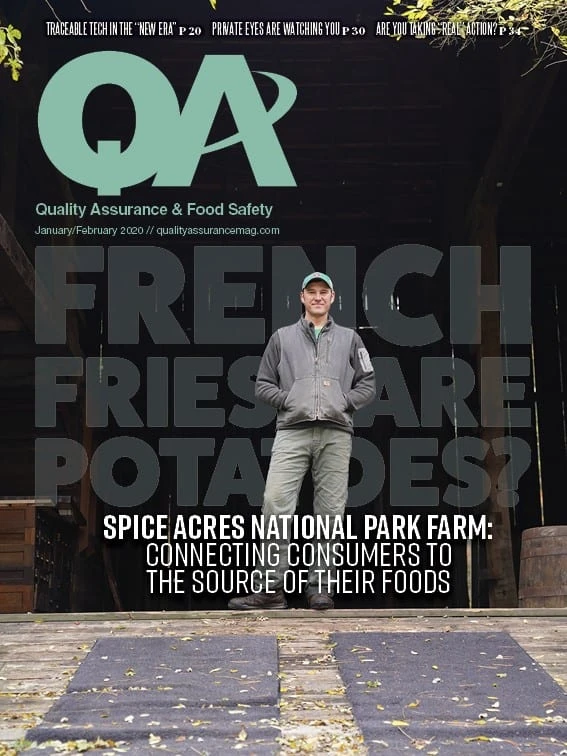
It was June, 2009. My daughter Melody (20) had come home to spend some “sister time” with 17-year-old Sydney. The two were enjoying the day, listening to music, chatting about things young women chat about, and baking cookies. Although we hear plenty of warnings today about the foodborne-illness potential of eating raw cookie dough, it was not a known issue at that time; there had been no previous associations with E. coli, Salmonella, or any other pathogen. So, as many of us did growing up, the girls were sampling bites of the dough before setting the cookie trays into the oven.
After returning to her apartment later that day, Melody began feeling sick with uncontrollable vomiting, diarrhea, and a high temperature. Too ill to do much for herself, Melody called her father who lived close to her. Alarmed, he immediately took her to the hospital. After a few days, she was diagnosed with dehydration due to E. coli poisoning. Being young and healthy, she was able to overcome the illness with antibiotics and fluids, and was released in a couple days. But some people are not so lucky (even healthy young adults).
One of the not-so-lucky ones was Sydney, who was born with cerebral palsy (CP) which weakens her immune system. After eating the dough, she had become violently ill and was burning up with fever. With their father already taking Melody to her nearest hospital, I got Sydney into my car to take her to the emergency room of our hospital. But, it was soon realized that Sydney’s symptoms were even more severe and serious than Melody’s — so much so that on the way to the hospital she had a seizure; she stopped breathing and began turning blue.
Knowing there was a fire station on the way to the hospital, I drove straight there. Jumping to the task, the EMTs revived Sydney, then, lights flashing and sirens blaring, rushed her to the hospital in an ambulance.
Sydney’s treatment was as harsh as the illness. With her fever having reached 106°F, she was literally dumped into an ice bath that the hospital had waiting for her when the ambulance arrived. It was surreal — like a scene from Grey’s Anatomy with all the medical staff racing down the hallway with her gurney to dump her into a barrel filled with ice and cold water. Throughout the next week, in an attempt to keep her at a normal temperature, she was kept in the hospital on an ice bed; her legs were in wrappings attached to a machine that continually circulated cold water around them.
There was a very real fear that she wouldn’t pull through.
We couldn’t know then that this wasn’t even to be the worst of the ordeal. Because of the assault on her body and her already weakened immune system, Sydney developed a severe complication often associated with E. coli poisoning — hemolytic uremic syndrome (HUS). HUS can cause clots to form in the blood vessels, which clog the filtering system in the kidneys and lead to kidney failure; it can be life-threatening. Sydney was fortunate to survive, but she lost the use of one of her kidneys to HUS — at the young age of 17.
The cookie dough product was determined to be the cause of an outbreak that led to the hospitalization of 34 persons, 10 of whom developed HUS. It was recalled that same month for E. coli 0157:H7 contamination.
There is no way to put a dollar amount on the costs of the medical treatment over the years as Sydney’s symptoms continue to persist and still need constant monitoring. Our lives were turned upside down that day.
Today, Sydney is married with six-year-old twin sons and just completed her first 5K. But, along with CP, she continues to live with the effects of her illness; suffers from depression and anxiety; has only one working kidney; and continues to have seizures, though they are controlled with medication. She also is extremely careful about safe food handling while taking care of herself and her family.
As a result of my daughters’ illnesses, I couldn’t go back to my old life either. Angry at first, I soon realized there was a lack of frontline employee training and understanding, and my attitude changed. I wanted to help people understand how to prevent foodborne illness; to make a difference so that no other family had to suffer the way ours has. Food safety awareness has become extremely important to me as a direct result of two of my three daughters becoming ill from E. coli food poisoning. I now work as a regulatory compliance specialist/food safety auditor and as a constituent with Stop Foodborne Illness to impart the “why” message and put faces with the illnesses.
Although the CDC outbreak summary shows that most of those who became ill had eaten the cookie dough raw, contamination also can be spread — both in the food facility and the home — by contact. When something as simple as handwashing can prevent suffering like that of my children, my main goal is getting the message out and training employees.

Explore the January February 2020 Issue
Check out more from this issue and find your next story to read.
Latest from Quality Assurance & Food Safety
- FDA Foods Coalition Urges RFK Not to Cut More Resources, Staff
- Bird Flu: What FSQA Professionals Need to Know
- Registration Open for 129th AFDO Annual Educational Conference
- Frank Yiannas, Aquatiq Partner to Expand Global Reach of Food Safety Culture
- World Food Safety Day 2025 Theme: Science in Action
- Ancera Launches Poultry Analytics System
- USDA Terminates Two Longstanding Food Safety Advisory Committees
- Catalyst Food Leaders Announces Virtual Leadership Summit for People in Food





